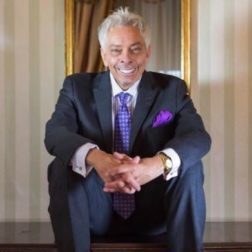
(By Mike McVay) This is not an article about beautifying America or being environmentally conscious, although both are worthwhile initiatives and the environment has been in the news a lot lately. This is about the listening environment. The audio stream that you’re distributing content on is an extension of your OTA (Over the Air) signal. What listeners hear online, on smart speakers, their laptops, phones, and most importantly in connected cars, is every bit as important as OTA Radio.
It is going to become even more important as Edison Research points out in their Share of Ear ® report that 11% of radio listening is to the stream. The study of those 13+ shows an increase in the USA of 67% since 2014. It stands to reason that it won’t go backwards. Radio listening is moving to devices beyond listening on an actual radio.
Fred Jacobs, President of Jacobs Media, pointing to research done by his company, shared that listener’s will listen to a radio station app on their phone while in a car even though the radio is inches away. “It’s a gadget convenience thing for some people,” said Jacobs. “Especially because so many have unlimited data.” He explained “if someone is listening on their phone at work, and they walk to their car listening, they might still listen on the phone in their car.” Jacobs also noted that “people are becoming device agnostic.” Meaning, it doesn’t matter if it’s their phone, a smart speaker, laptop or radio. It’s what’s convenient.
It was reported last week that Spotify’s stereo device, Car Thing, has been discontinued five months after wide release in the US. They pointed to an electronics analyst that noted that 98% of new cars in America come with Apple’s CarPlay already installed. The analyst was quoted as saying “I remember thinking; this is dead in the water.”
If 98% of new cars in America arrive wired to play audio from the stream, and as Fred Jacobs notes “people listen to radio via the apps on their phones, even when in a car” and Edison Media shows a 67% increase in online listening over the last 8 years, it stands to reason that the trend to listen online instead of OTA will continue. This alone should alert those at the highest positions in radio to ask if their digital content is as good as over-the-air.
Listening digitally, via an app, also raises the importance of focusing on apps and having one that is attractive making it easily identifiable, easy to access content, easy to utilize for all of their content offerings and easy to use on all devices. Many radio stations pay little attention to their individual apps.
It also means that when the “scale of justice” tilts to radio on the stream, advertisers who are buying ad schedules on stations that do not TLR (Total Line Report), are losing ears on their commercials. The ads they bought are being heard by fewer people if the audience is divided. While I realize that there is revenue being generated by stations who sell digital separately, it begs the question how much money can be generated when the OTA and On-Line listening is combined as one with a simulcast.
When a station doesn’t Total Line Report it’s not unusual to hear commercials, songs, promos, imaging and jingles upcut. This happens when the stream and air aren’t synched-up and you’re covering commercials on-air with commercials that play only on the stream. Add to that poor trafficking which sometimes means playing the same commercials back-to-back, the same PSA’s over and over, and abrupt transitions entering the news or anything that is sourced from a network or syndication.
These issues can be improved upon, and even eliminated, with attention and adjustment. Attention to what’s airing on the stream and alignment by the technical team to synch-up the stream and air. PD’s need to listen online as well as OTA. Alternate between the two. One day on one and one day on the other. Engineering/Technical need to check the synch weekly or as soon as it is noticed and they are alerted that there’s a problem with the audio alignment.
As someone who has spent a career being responsible for growing and monetizing an audience, Total Line Reporting is the answer to expanding your coverage and getting credit for all listening, in addition to improving the online listening experience. TLR means Total Line Reporting. It can also mean Top Line Ratings and Top Line Revenue.
Note an earlier version of this column incorrectly stated the percentage of radio listening on the stream.
Mike McVay is President of McVay Media and can be reached at [email protected]





